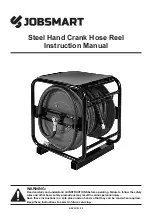
64
January 2004
SPECIAL KEYS
Quick Code makes use of the jog handle to select from the group list and group items. This is described in the
group window section above. Quick Code action takes place when the WRITE key is pressed. If there is text
on the input line, normal text insertion takes place when the WRITE key is pressed. When the input line is
blank, pressing the WRITE key will cause Quick Code to take the following action:
-If the currently highlighted Quick Code item is designed as a text help item only, the edit window is not
modified.
-If numeric program code is found associated with the highlighted Quick Code item, the edit window cursor is
moved to the end of the current edit block and the associated code is inserted after that block. The edit cursor
is left at the end of the last Quick Code block that was inserted.
C
ONVERSATIONAL
Q
UICK
C
ODE
Quick Code is used to "prompt" the operator for the information necessary to create a program. The "prompting
comments" are created by placing a '?' as the first character of a (?comment) in the Quick Code source file
(O09999). A comment is any text, up to 34 characters, that is contained in parentheses. When a program is
being written using Quick Code, the prompting comments will appear on the screen, requiring a response from
the operator. The numeric value entered by the operator will be assigned to the G-code item that immediately
precedes the prompting comment in the source file. The Quick Code source file program is O09999.
For example, defining an X axis feed move, the following line of code would be in the source file:
G01 X2. (?WHAT IS THE X LOCATION) F15. (?WHAT IS THE FEEDRATE)
Will produce the following prompt when creating a new program, under a another program number (O1234)
using Quick Code. And the default X location value displayed below with the prompt, as shown:
WHAT IS THE X LOCATION
X2.
and you ENTER a new X location value of 2.25
X2.25
a
nd then the next command prompt comes up.
With the default feed rate value displayed below the prompt, as shown:
WHAT IS THE FEED RATE
F15.
and you decide to keep this default feedrate value.
The operator must then enter a numeric value and press the WRITE key to change the default feed rate, or
simply press the WRITE key to accept the default feed rate. The control will wait for an operator response
before entering the block to the edit window. Unacceptable responses, such as those containing too many
digits or an unnecessary decimal, will cause the control to flash an error message and wait for another re-
sponse.
Once the operator has input a value for all of the 'variable' G-code items in a block of code, the entire (revised)
block is displayed on the input line, as shown:
CORRECT (Y/N) ?
G01 X2.5 F15. ;
Содержание VF Series
Страница 1: ...January 2004...
Страница 7: ...V I January 2004...
Страница 125: ...118 January 2004...
Страница 126: ......
















































